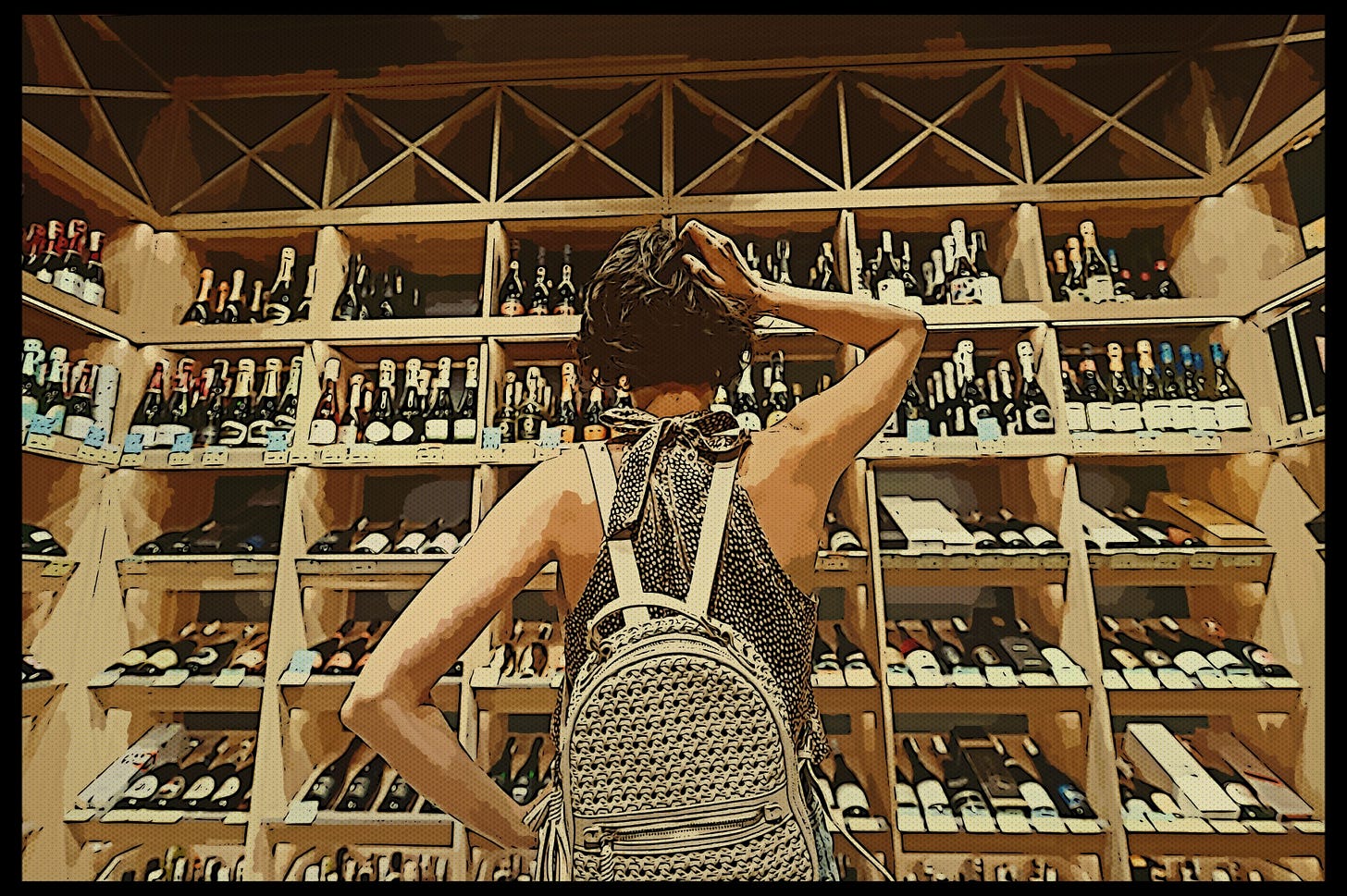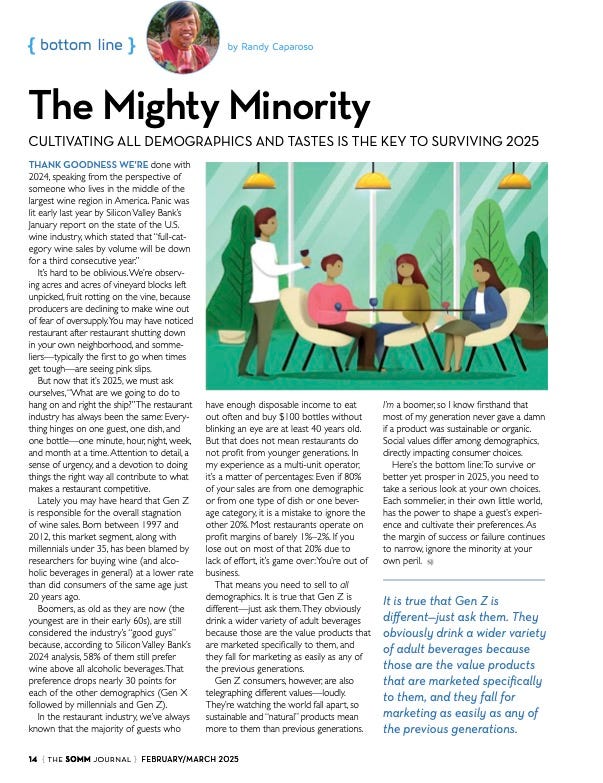Thank goodness we're done with 2024⏤speaking from the perspective of someone who lives in the middle of the largest wine region in America. Last year the feeling of panic was lit by Silicon Valley Bank's January 2024 report on the state of the U.S. wine industry, which stated: "Full-category wine sales by volume will be down for a third consecutive year."
It's hard to be oblivious. We see acres and acres of vineyard blocks left unpicked, fruit rotting on the vine, because wineries are declining to produce wine out of fear of oversupply. In your neighborhood you may be seeing restaurant after restaurant shutting down. Sommeliers⏤as usual, the first to go when times get tough⏤are seeing pink slips.
But this is 2025. What are you going to do to hang on, and aright your ship? The restaurant industry is always the same: Everything hinges on one guest, one dish, one bottle, one minute, hour, night, week and month at a time. Attention to detail, sense of urgency, doing things the right way, all adding up to a competitive restaurant.
Lately you may have heard that one reason overall wine sales are stagnant is because of Gen Z⏤consumers born between 1997 and 2012. This market segment, plus Millennials under 35, are blamed by researchers for buying wine (and alcoholic beverages in general) at a lower rate than consumers of the same age just 20 years ago.

Boomers, as old as they are now (the youngest are in their early 60s), are still considered the industry's "good guys" because, according to Silicon Valley Bank's 2024 analysis, 58% of them still prefer wine above all alcoholic beverages. That preference drops nearly 30 points for each of the other demographics (Gen X followed by Millennials and Zs).
In the restaurant industry we've always known that the majority of guests who have come into enough disposable income to eat out often and buy $100 bottles without blinking an eye are at least 40 years old. But that does not mean restaurants do not profit from younger generations. In my experience as a multi-unit operator, it's a matter of percentages: Even if 80% of your sales are from one demographic, or in one type of dish or one category of wine, beer or cocktail, it is a mistake to ignore the other 20%. Most restaurants operate on barely 1% or 2% profit margins. If you lose most of that 20% for lack of effort, it's game over⏤you're out of business.
You need to sell to all demographics. It is true that Gen Z is different. If you doubt that, just ask any of them. They obviously drink more variety of adult beverages because those are the value products, and because those products are marketed specifically to them. They fall for marketing as easily as any of the previous generations.
Gen Z consumers, however, are also telegraphing different values. Loudly. They're seeing the world falling apart, and so sustainable and "natural" products mean more to them than previous generations. I'm a Boomer, so I know first hand that most of my generation never gave a damn if a product was sustainable or organic. Social DNA differs among demographics, directly impacting consumer choices.
Bottom line, to survive or prosper in 2025 you need to take a serious look at your own choices. Each sommelier, in their own little world, controls the guests he or she chooses to cultivate. While percentages tantamount to success or failure continue to narrow, to ignore minority tastes is to do so at your own peril.





